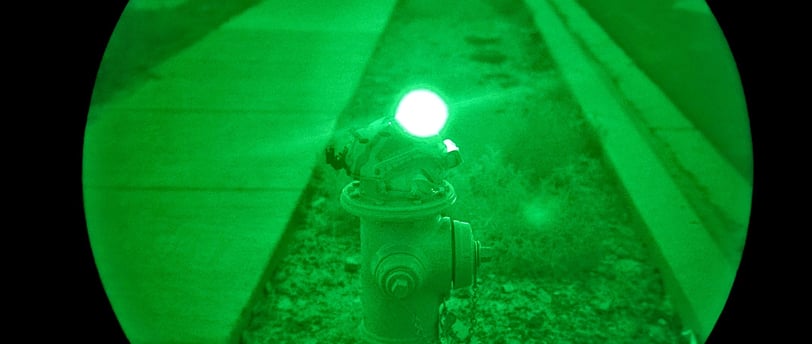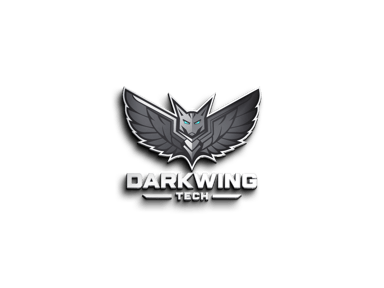The Evolution of the O.W.L.: A Smarter, More Versatile Alternative
Marking hazards and maintaining visibility has long been a challenge in tactical, emergency, and outdoor environments. The O.W.L. (Operational Warning Light) was developed as a cost-effective, reusable, and versatile alternative to traditional chemical glow sticks. From military operations to first responders, runners, and pet owners, the O.W.L. offers a safer, more efficient solution for marking and illumination. Learn about its history, development, and real-world applications that make it an essential tool for professionals and everyday users alike.
SAFETYCOMBATHISTORY TACTICAL LIGHTINGINFRARED MARKERSOUTDOOR SAFETY
SGT. Dan Thomas (Retired)
1/28/20255 min read


O.W.L. History: The Evolution of Tactical Visibility
The Birth of an Idea (2003 - 2009)
The concept of the O.W.L. (Operational Warning Light) was born in 2003 during our founder’s first combat deployment in the Marine Corps. Chemical luminescent sticks (glow sticks) were a critical tool for marking hazards and navigating in the dark. They were simple, effective—but also limited in versatility.
By 2009, during another combat deployment, night vision technology was integrated into nearly every mission. Infrared (IR) chemical luminescence became even more essential, allowing for covert signaling and marking hazards. The problem? Chemical glow sticks were fragile, single-use, and lacked flexibility in deployment.
A Career in Tactical Operations (Law Enforcement & SWAT)
While in the military, our founder transitioned into law enforcement, where he spent 20 years as a police officer and SWAT operator, with 17 years on SWAT teams in roles such as:
Entry Operator
Sniper & Sniper Team Leader
Entry Team Leader
SWAT Field Commander
Despite decades of experience in tactical operations, he rarely saw chemical luminescent devices used in law enforcement. The reason? Cost, bulkiness, and a lack of training.
Why Traditional Glow Sticks Failed Tactical Teams
While glow sticks were effective, they had major drawbacks for law enforcement and SWAT teams:
❌ Single-use only – Once cracked, they’re done. No ability to turn them off.
❌ Expensive – Training with them required constant replacement.
❌ Bulky and rigid – Limited in where they could be stored and deployed.
❌ No multi-use functionality – Could only be placed on the ground or hung by a string.
Creating the O.W.L.: A Smarter Alternative
To solve these problems, we engineered the O.W.L.—a reusable, compact, and versatile alternative to traditional glow sticks. The goal was to provide:
✅ Multi-use functionality – Easily attach to gear, helmets, MOLLE, K9 vests, or deploy on the ground.
✅ Multiple lighting modes – Steady, Strobe, and Flash for different tactical needs.
✅ Cost-effective solution – Instead of replacing single-use glow sticks, the O.W.L. offers 40+ hours of use on replaceable batteries.
✅ Both Visible & Infrared (IR) options – Suitable for both law enforcement and military applications.
✅ Durability & Reliability – Built to withstand harsh environments.
The Cost Comparison: O.W.L. vs. Glow Sticks
A single chemical glow stick lasts a few hours, while an O.W.L. lasts 40+ hours and can be turned on/off.
Product: Color Glow Sticks
Quantity Needed for 40+ Hours: 5
Total Cost: $15
Product: O.W.L. Color Light
Quantity Needed for 40+ Hours: 1
Total Cost: $5.99
Product: IR Glow Sticks
Quantity Needed for 40+ Hours: 13
Total Cost: $780
Product: O.W.L. IR Light
Quantity Needed for 40+ Hours: 1
Total Cost: $8.99
The Prototyping & Design Process: Creating the O.W.L. Light
When designing the O.W.L. (Operational Warning Light), we focused on simplicity, cost-effectiveness, durability, and versatility. Many tactical lights on the market are overcomplicated, which makes them expensive and difficult to use in high-stress situations. Our goal was to create a practical, intuitive, and adaptable lighting solution that met the needs of first responders, tactical professionals, and everyday users.
Step 1: Cost-Effectiveness
A major challenge in tactical lighting is cost. Many high-end lights are so expensive that agencies and teams hesitate to train with them, leading to a lack of familiarity and reduced effectiveness in real-world applications. We designed the O.W.L. to be affordable enough for both training and operational use, ensuring that users could integrate it seamlessly into their gear.
Step 2: Simplicity in Design
Many tactical lights require multiple button presses, confusing sequences, or hard-to-remember modes—problems that only get worse under stress. We eliminated unnecessary complexity by implementing a single push-button operation that allows users to toggle between:
🔹 Steady Mode – Constant illumination
🔹 Fast Strobe – Immediate attention-getting
🔹 Slow Flash – Prolonged visibility with minimal battery drain
With no confusing programming or accidental activation issues, the O.W.L. ensures quick deployment in any scenario.
Step 3: Compact Size & Versatility
The light needed to be small enough to carry easily, yet powerful enough to be effective. The final compact design allows the O.W.L. to attach to:
✅ Gear & Equipment: MOLLE, vests, helmets, backpacks, and belts
✅ Objects in the Environment: Traffic cones, barricades, vehicles, fences, and road hazards
✅ Tactical & Emergency Marking: Door handles, trees, ground surfaces, or any area needing visibility
The directional glow-tip effect provides even more versatility:
Placed on its back, it illuminates a small room.
Positioned on its side, it lights up a focused area.
Faced toward others, it can be seen from over half a mile away, particularly in slow flash or strobe mode.
Step 4: Maximizing Durability
Despite being cost-effective, we wanted the O.W.L. to be tough. Many tactical lights are fragile or easily damaged in extreme environments. Our IP65-rated shell provides:
✅ Splash Resistance – Withstands rain, sweat, and incidental water exposure
✅ Dust Protection – Prevents dirt, sand, and debris from interfering with performance
✅ Shock Absorption – A rubber protective sleeve adds extra impact resistance
But we didn't stop there.
During testing, we submerged an O.W.L. in a foot of water for 48 hours while activated. Once the batteries died, we removed it, dried it off, replaced the batteries— and it still worked perfectly. While we classify the O.W.L. as weatherproof, our real-world testing shows it can handle much more than that.
Final Thoughts
The O.W.L. was built with a mission in mind: to replace outdated, expensive, and single-use hazard marking tools with a simple, reliable, and multi-use lighting solution. From combat zones to construction sites, search and rescue missions to everyday safety, the O.W.L. is designed to work when you need it most—without breaking the bank.
Could You Imagine?
Police Officers 🚔
Could you imagine if every police officer had an O.W.L. Light?
✅ Extra visibility outside of their vehicles during traffic stops and accidents
✅ Marking traffic cones for safer road incidents and perimeter control
✅ Identifying cleared areas in large buildings during active searches
✅ Signaling backup officers with color-coded lights in tactical operations
Firefighters & EMS 🚒🚑
Could you imagine if firefighters and EMTs used these lights?
✅ Increased visibility while providing patient care on accident scenes
✅ Marking smoke-filled rooms that have been searched or cleared
✅ Attaching to gear for extra lighting inside burning or dark buildings
✅ Identifying hazards for incoming units to navigate dangerous conditions
Military & SWAT Teams 🎯
Could you imagine if tactical teams incorporated O.W.L. Lights into their operations?
✅ Covert Infrared Marking for night vision operations and drone integration
✅ Marking cleared rooms during dynamic entry missions
✅ Identifying friendly personnel in low-visibility combat scenarios
✅ Signaling and hazard marking without relying on expensive, single-use devices
Search & Rescue Teams 🏔️🚁
Could you imagine if SAR teams had these for their missions?
✅ Marking search areas to prevent unnecessary double searches
✅ Providing visibility for lost individuals to spot rescue teams
✅ Signaling with different colors to indicate priority search zones
✅ Easily attaching to rescue dogs, backpacks, or helmets
Runners, Cyclists & Hikers 🏃🚴🏕️
Could you imagine if every outdoor adventurer carried one?
✅ Increased safety on roads, trails, and bike paths at night
✅ Attaching to backpacks, belts, or helmets for high-visibility movement
✅ Signaling for help in case of injury or getting lost
✅ Lighting dark paths for better navigation
Drivers & Roadside Safety 🚗🔦
Could you imagine if every driver had one in their vehicle?
✅ Providing emergency lighting during roadside breakdowns
✅ Marking vehicle locations in dark or foggy conditions
✅ Warning other drivers of hazards like stalled cars or crashes
✅ Reducing accident risk when waiting for roadside assistance
Parents & Pet Owners 👨👩👧👦🐶
Could you imagine if families & pet owners used these daily?
✅ Keeping kids visible while walking home or playing outside
✅ Attaching to pet collars for safer nighttime walks
✅ Ensuring stroller visibility when crossing streets
✅ Giving peace of mind with an extra layer of protection
Bringing Visibility Where It’s Needed Most
O.W.L. Lights aren’t just tactical tools—they’re life-saving, multipurpose safety lights. From first responders to families, military units to outdoor enthusiasts, these lights redefine safety in any environment.
Thank you for reading our blog and the history of the O.W.L. Let us offer you 10% off any O.W.L. product-related purchases. Use OWL10 discount code at checkout. Or use OWLBUNDLE15 to get 15% off any O.W.L. Bundle purchases. Plus, free standard shipping on all purchases over $50.
💡 How would YOU use an O.W.L.? Let us know. Tag us on your social media posts using our lights. If we highlight your posts we will send you exclusive offers and/or products.
